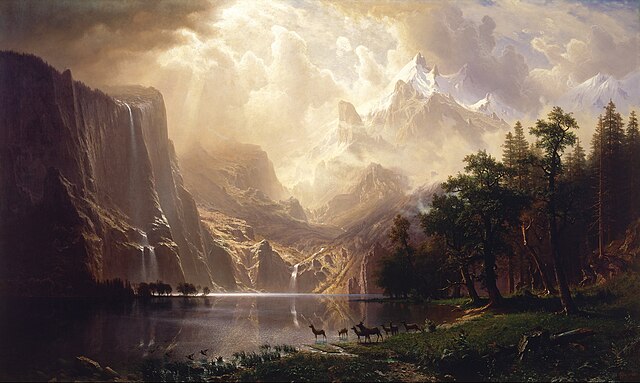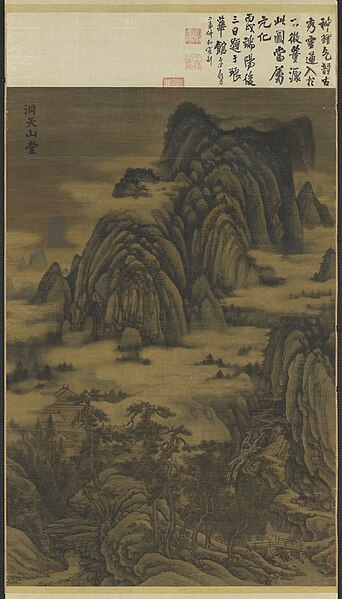The Hudson River School was a mid-19th-century American art movement embodied by a group of landscape painters whose aesthetic vision was influenced by Romanticism. Early on, the paintings typically depicted the Hudson River Valley and the surrounding area, including the Catskill, Adirondack, and White Mountains.
Thomas Cole (1801–1848), The Oxbow, View from Mount Holyoke, Northampton, Massachusetts, after a Thunderstorm (1836), Metropolitan Museum of Art
Thomas Cole, A View of the Two Lakes and Mountain House, Catskill Mountains, Morning, 1844, Brooklyn Museum of Art
Frederic Edwin Church, Niagara Falls, 1857, Corcoran Gallery of Art, Washington, D.C.
Albert Bierstadt, Among the Sierra Nevada, California, 1868, Smithsonian American Art Museum, Washington, D.C.
Landscape painting, also known as landscape art, is the depiction of natural scenery such as mountains, valleys, trees, rivers, and forests, especially where the main subject is a wide view—with its elements arranged into a coherent composition. In other works, landscape backgrounds for figures can still form an important part of the work. Sky is almost always included in the view, and weather is often an element of the composition. Detailed landscapes as a distinct subject are not found in all artistic traditions, and develop when there is already a sophisticated tradition of representing other subjects.
Joachim Patinir (1480–1524), Landscape with Charon Crossing the Styx, 1515–1524. Patinir pioneered the "world landscape" style.
Themistokles von Eckenbrecher (German, 1842–1921), View of Lærdalsøyri, on the Sognefjord, 1901
Dong Yuan (934–962) Dongtian Mountain Hall (Chinese: 洞天山堂圖). 10th century, the Five Dynasties (Chinese). National Palace Museum, Taipei.
Landscape with scene from the Odyssey, Rome, c. 60–40 BCE








